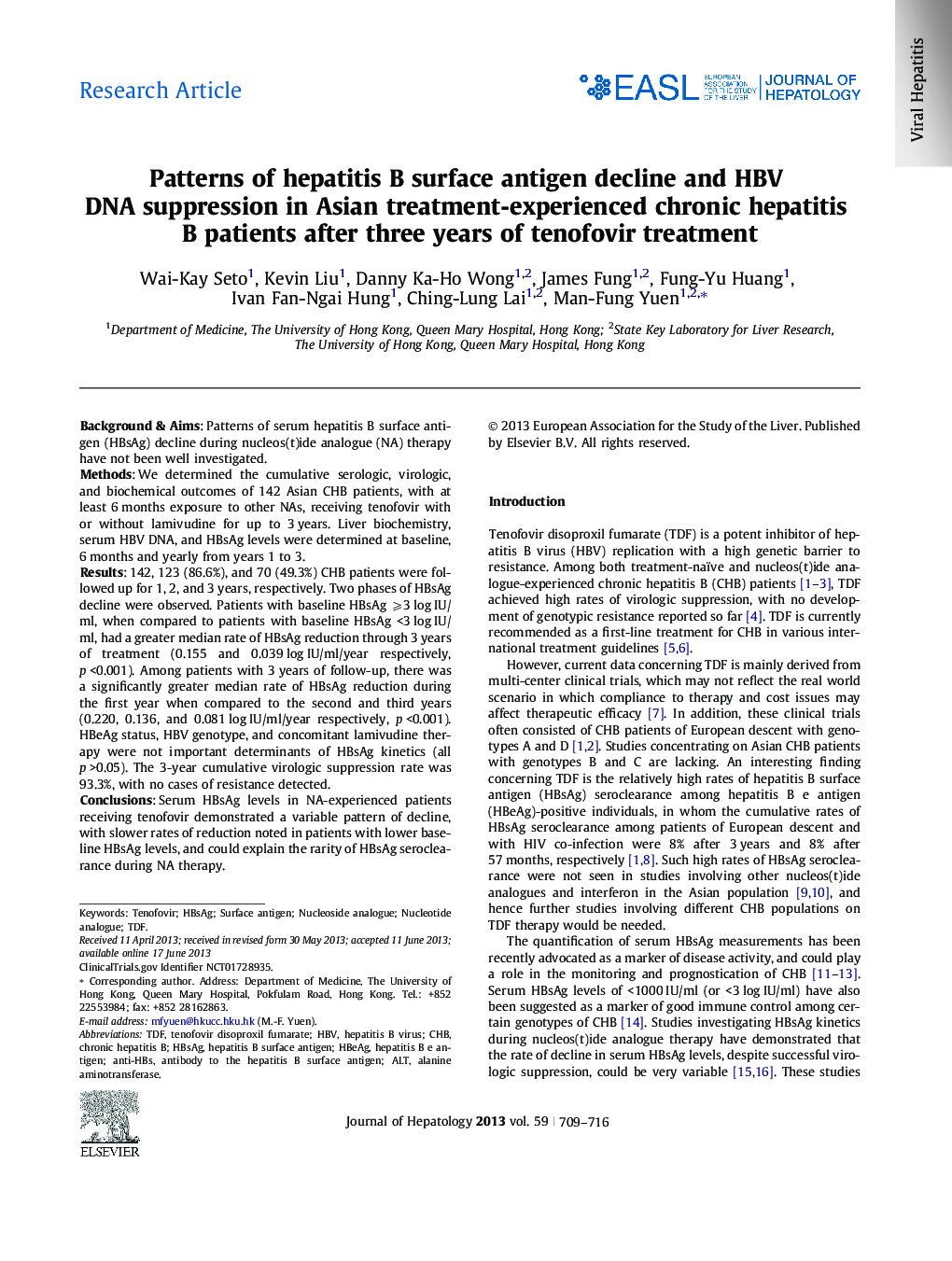| Article ID | Journal | Published Year | Pages | File Type |
|---|---|---|---|---|
| 6103772 | Journal of Hepatology | 2013 | 8 Pages |
Background & AimsPatterns of serum hepatitis B surface antigen (HBsAg) decline during nucleos(t)ide analogue (NA) therapy have not been well investigated.MethodsWe determined the cumulative serologic, virologic, and biochemical outcomes of 142 Asian CHB patients, with at least 6 months exposure to other NAs, receiving tenofovir with or without lamivudine for up to 3 years. Liver biochemistry, serum HBV DNA, and HBsAg levels were determined at baseline, 6 months and yearly from years 1 to 3.Results142, 123 (86.6%), and 70 (49.3%) CHB patients were followed up for 1, 2, and 3 years, respectively. Two phases of HBsAg decline were observed. Patients with baseline HBsAg ⩾3 log IU/ml, when compared to patients with baseline HBsAg <3 log IU/ml, had a greater median rate of HBsAg reduction through 3 years of treatment (0.155 and 0.039 log IU/ml/year respectively, p <0.001). Among patients with 3 years of follow-up, there was a significantly greater median rate of HBsAg reduction during the first year when compared to the second and third years (0.220, 0.136, and 0.081 log IU/ml/year respectively, p <0.001). HBeAg status, HBV genotype, and concomitant lamivudine therapy were not important determinants of HBsAg kinetics (all p >0.05). The 3-year cumulative virologic suppression rate was 93.3%, with no cases of resistance detected.ConclusionsSerum HBsAg levels in NA-experienced patients receiving tenofovir demonstrated a variable pattern of decline, with slower rates of reduction noted in patients with lower baseline HBsAg levels, and could explain the rarity of HBsAg seroclearance during NA therapy.
